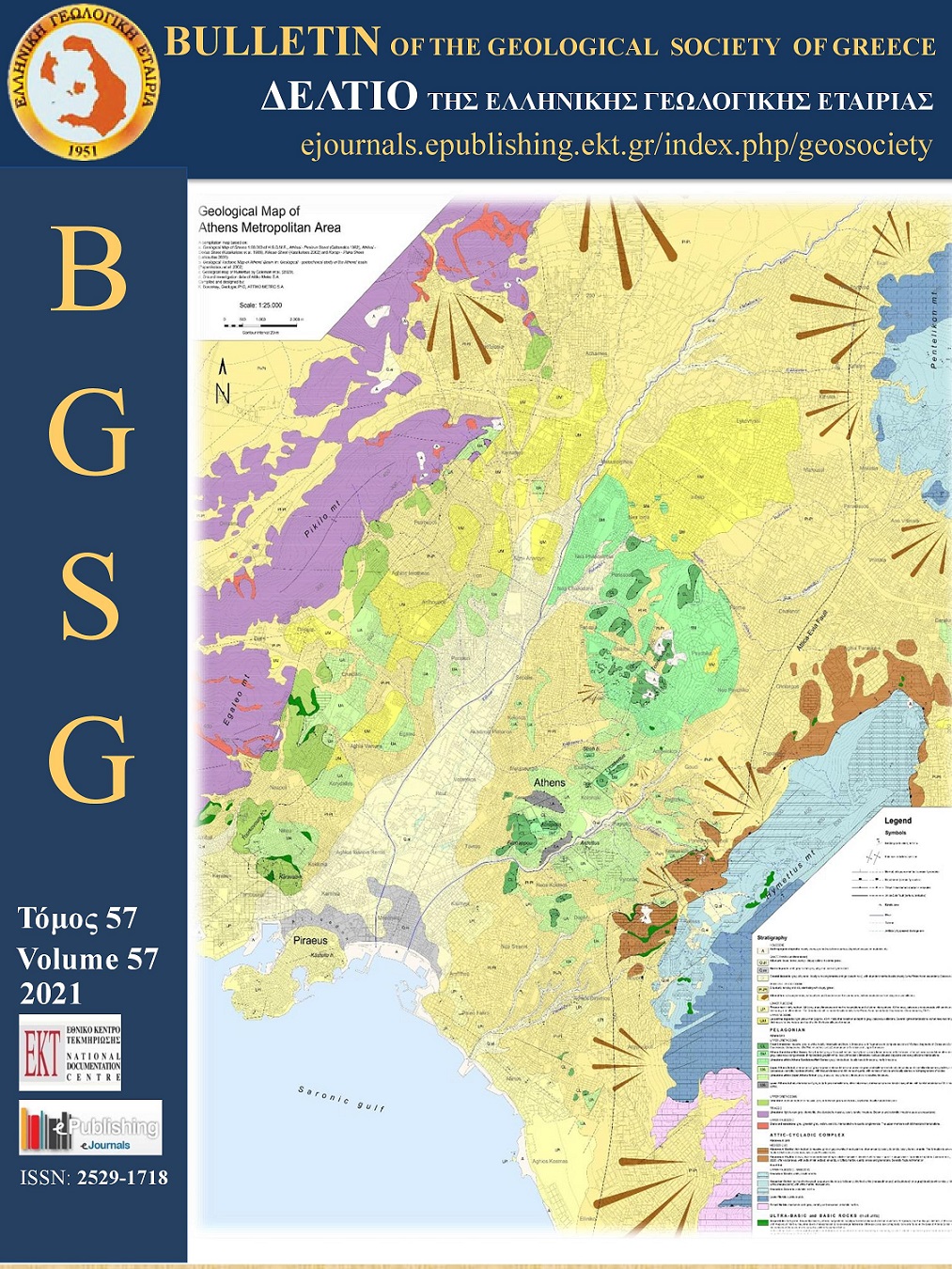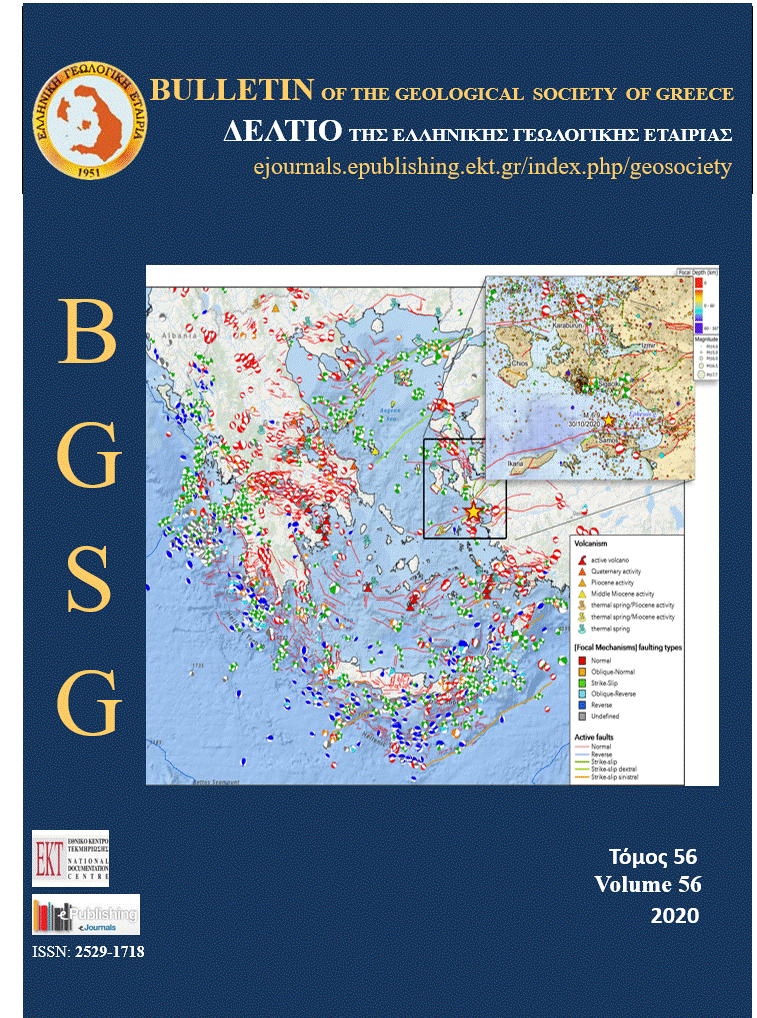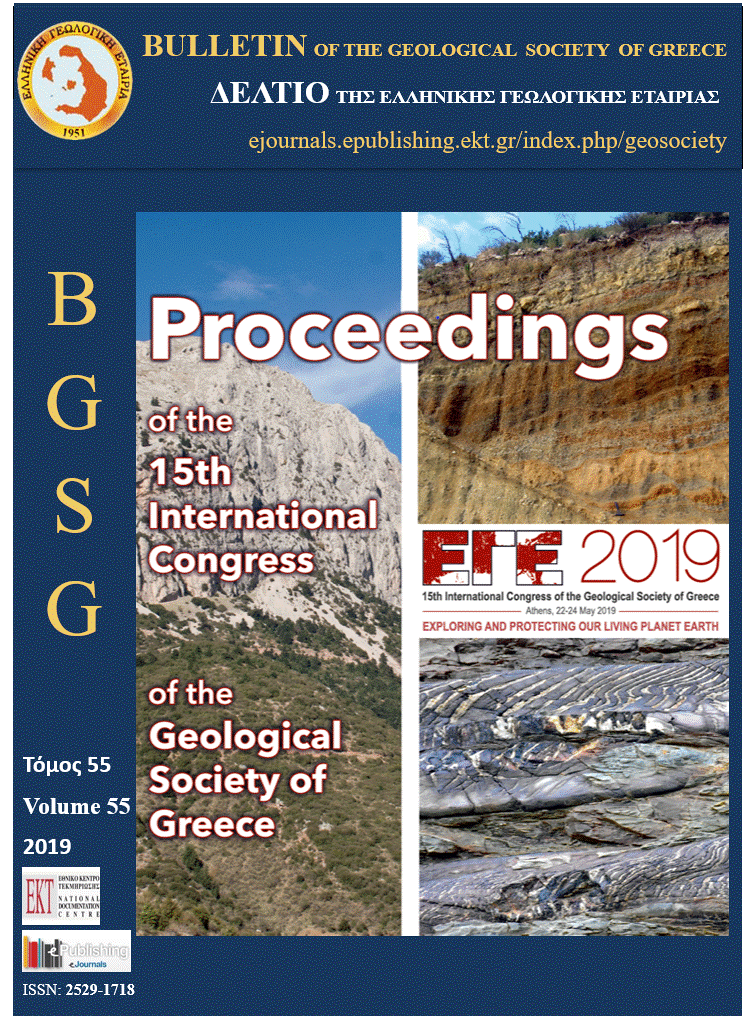The tectonostratigraphic architecture of the Serbo-Macedonian massif in the Vertiskos and Kerdilion mountains (Northern Greece)

Abstract
The lithologies and structural features of the exposed rocks of the Serbo-Macedonian massif in the Vertiskos and Kerdilion Mts. have been studied in detail by carrying out km-long cross-sections. Moreover, a new tectonostratigraphic architecture for the massif is proposed, based on the migmatization and anatexis that the rocks pertain, under which the specific exposed rocks have been placed into the Vertiskos and Kerdilion Units. The latter approach differs from the traditional view, which is based solely on the lithological difference between the units. In particular, in the Vertiskos Mt., mica schists, garnet-bearing two-mica gneisses, and predominantly two-mica gneisses, without a sign of anatexis and migmatization, overlie tectonically, biotite gneisses and layered amphibolite gneisses into which migmatization and anatexis takes place. The former constitute the Vertiskos Unit, whereas the latter have been grouped into the Kerdilion Unit, since they are of similar lithologies and affinities with rocks of the Kerdilion Unit. The Kerdilion Mt. is a large antiform made up of biotite gneisses alternating with marbles, which are similarly characterized by intense migmatization and anatexis. These rocks are intruded by the Oreskia granite, which is foliated and follows the general trend of the country rocks. All the rocks are folded with isoclinal to tight folds, and the contact between the two units is a mylonitic shear zone with a top-to-the-SW sense-of-shear. Also, a large volume of ultramafic rocks occurs between the Vertiskos and Kerdilion Mts., including metamorphosed rocks like metagabbros to massive amphibolites, which is assigned to the Therma-Volvi-Gomati Complex (TVGC). These rocks have been found in tectonic contact, i.e., shear zones with top-to-the-SW sense-of-shear, only with the rocks of the Kerdilion Unit. Taking into account our new tectonostratigraphic architecture, the contact between the Vertiskos and Kerdilion Units is not located along the western side of the marbles, as the latter are exposed in the Kerdilion Mt. It is traced westerly in the Vertiskos Mt. dipping with intermediate angles towards the SW, due to NW-trending, map-scale, isoclinal folding. The ultramafic rocks of the TVGC are in tectonic contact with the rocks of the Kerdilion Unit, but not the two-mica gneisses of the Vertiskos Unit, and the Arnea granite intrudes not only the Vertiskos Unit as previously considered, but the rocks of the Kerdilion Unit, as well.
Article Details
- How to Cite
-
Plougarlis, A., Tranos, M., & Papadopoulou, L. (2021). The tectonostratigraphic architecture of the Serbo-Macedonian massif in the Vertiskos and Kerdilion mountains (Northern Greece). Bulletin of the Geological Society of Greece, 57(1), 1–22. https://doi.org/10.12681/bgsg.25054
- Issue
- Vol. 57 No. 1 (2021)
- Section
- Structural Geology

This work is licensed under a Creative Commons Attribution-NonCommercial 4.0 International License.
Authors who publish with this journal agree to the following terms:
Authors retain copyright and grant the journal right of first publication with the work simultaneously licensed under a Creative Commons Attribution Non-Commercial License that allows others to share the work with an acknowledgement of the work's authorship and initial publication in this journal.
Authors are able to enter into separate, additional contractual arrangements for the non-exclusive distribution of the journal's published version of the work (e.g. post it to an institutional repository or publish it in a book), with an acknowledgement of its initial publication in this journal. Authors are permitted and encouraged to post their work online (preferably in institutional repositories or on their website) prior to and during the submission process, as it can lead to productive exchanges, as well as earlier and greater citation of published work.




